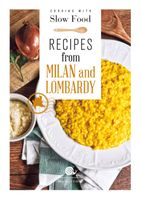Advertisement
5 Grains
By Slow Food
Published 2018
Rice production occupies a central role in the region’s economy and gastronomy. Traditionally eaten more than pasta, it is cultivated particularly in the provinces of Pavia, Milan, Lodi and Mantua. Along with corn, it is Lombardy’s most important cereal grain, often used in risotto or soups. There are three main varieties: carnaroli, with large, elongated grains; arborio, particularly rich in starch; and vialone nano, with smaller, oval grains. The less the grains are processed, the higher their nutritional properties, because most of the protein is contained in the outer layer of the seed coat. Corn, which came to Europe from the New World as part of the Columbian Exchange, used to be known as granoturco, “Turkish grain,” because of its exotic origins. In recent decades around 20 local varieties for polenta have been recovered in Italy. In Lombardy these include the red Rovetta rostrato, included in Slow Food’s Ark of Taste, whose name comes from the grain’s point (rostro, “rostrum”, meaning a beak-like projection). Corn is mostly used ground into meal: coarse farina bramata for polenta, fine fioretto for soft polenta and baking and very fine fumetto for biscuits and other sweets.


